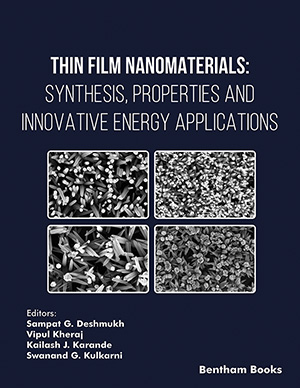
Abstract
Background: The present study intended to design and evaluate Acitretin (ACT) loaded Nanostructured Lipid Carriers (NLCs) for the management of psoriasis through topical application. Psoriasis is an autoimmune disorder that affects the skin and is characterized by irritation, red flaky patches over different parts of the body. ACT is an analog of vitamin A that is used for the management of psoriasis via the oral route. The prime demerit associated with oral route delivery of a drug is the teratogenic effect associated with the active molecule and side effects like dry mouth, runny nose, hair loss, taste changes, chapped lips, etc. that are the major contributing factors of reduced patient compliance.
Objective: The objective of the present research work was to develop a topical formulation of ACT. Developing topical formulation for the same can result in enhanced patient compliance and can be worth compared to the marketed oral formulation of the drug.
Methods: ACT loaded NLCs were prepared by hot homogenization method using oleic acid as a liquid lipid and stearic acid as a solid lipid in a 7:3 ratio along with the combination of a non-ionic surfactant (Tween 80) and an anionic surfactant (sodium lauryl sulphate).
Results: In several optimization experiments, formulation F3 was found to be most appropriate for formulating gel. Morphological information obtained from SEM reinforced the formation of particles with nearly spherical morphology. The optimized formulation had a mean diameter of 363 nm, as founded by Zetasizer. XRD studies affirmed that the formulation exhibits amorphous nature, which is an essential character of NLC. An optimized formulation was further incorporated in the gel by using Carbopol 940P as a gelling agent. In vitro release studies indicated 96.85 ± 2% release in 8 hours with Korsmeyer- Peppas model release kinetics. The observed n value1.391 for drug release for F3G2 bespeak Super case II transport may be the result of sorption of the drug from the surface of NLC that is controlled by stress-induced relaxation which occurs at the boundary of the swollen shell.
Conclusion: In vitro characterization of ACT (Acitretin) loaded NLC supports the objective that NLC can serve as a potential carrier for topical delivery of ACT and can also reduce oral toxicity associated with drug after stringent evaluation in the near future.
Keywords: NLC, hot homogenization, release kinetics, korsmeyer-peppas, nanocarrier gel, acitretin.
[http://dx.doi.org/10.1016/S0939-6411(98)00074-5] [PMID: 10234536]
[http://dx.doi.org/10.1517/17425247.2012.673278] [PMID: 22439808]
[http://dx.doi.org/10.1021/acsami.0c18470] [PMID: 33373205]
[http://dx.doi.org/10.1016/j.tifs.2020.10.025]
[http://dx.doi.org/10.1046/j.1365-2230.2001.00832.x] [PMID: 11422182]
[http://dx.doi.org/10.2147/DDDT.S32713] [PMID: 23569359]
[http://dx.doi.org/10.1007/s12016-018-8668-1] [PMID: 29349534]
[PMID: 28319618]
[http://dx.doi.org/10.2147/PTT.S98893] [PMID: 29441315]
[http://dx.doi.org/10.1111/bjd.15656] [PMID: 28498514]
[http://dx.doi.org/10.1111/bjd.14627] [PMID: 27037661]
[http://dx.doi.org/10.1056/NEJM198510033131401] [PMID: 3162101]
[http://dx.doi.org/10.1159/000246811] [PMID: 8075435]
[http://dx.doi.org/10.1016/j.bfopcu.2015.10.001]
[http://dx.doi.org/10.1016/j.ejbas.2017.02.001]
[http://dx.doi.org/10.3390/pharmaceutics11040180] [PMID: 31013995]
[http://dx.doi.org/10.3390/scipharm89020015]
[http://dx.doi.org/10.1016/S0955-2863(99)00074-1] [PMID: 10715596]
[http://dx.doi.org/10.1590/0001-3765201620160162] [PMID: 27925034]
[http://dx.doi.org/10.1016/j.ijpharm.2010.12.036] [PMID: 21219990]
[http://dx.doi.org/10.1016/S1081-1206(10)61024-1] [PMID: 16400901]
[http://dx.doi.org/10.1016/S0001-8686(99)00017-2] [PMID: 10768479]
[http://dx.doi.org/10.1016/S0169-409X(02)00118-7] [PMID: 12460720]
[http://dx.doi.org/10.1016/j.jcis.2009.03.012] [PMID: 19380149]
[http://dx.doi.org/10.1016/j.ijbiomac.2013.01.015] [PMID: 23376559]
[http://dx.doi.org/10.4103/0250-474X.106066] [PMID: 23439454]
[http://dx.doi.org/10.1002/adhm.201901862] [PMID: 32627972]
[http://dx.doi.org/10.1002/aisy.202000084]
[http://dx.doi.org/10.1016/j.biomaterials.2019.119394] [PMID: 31382208]



























